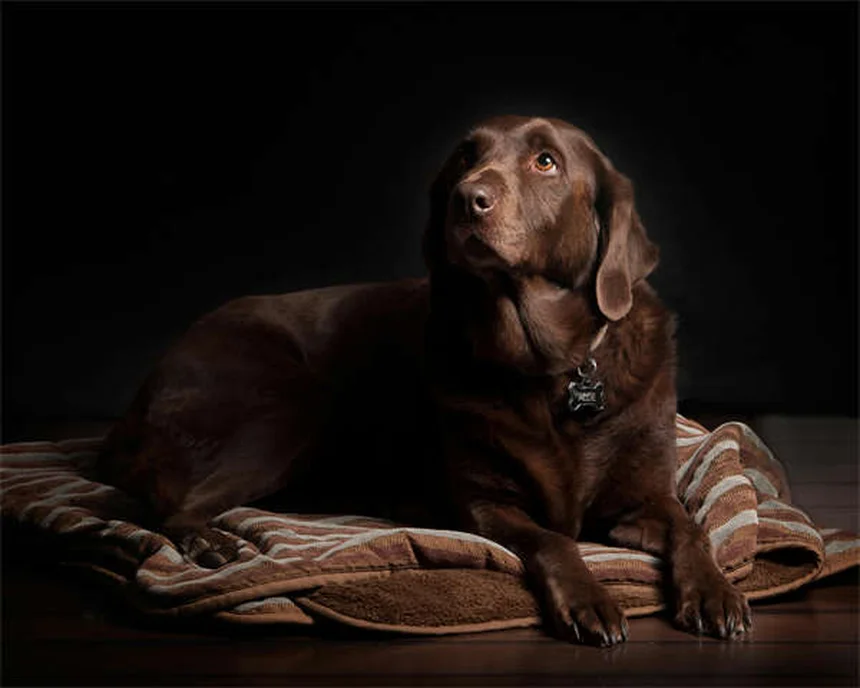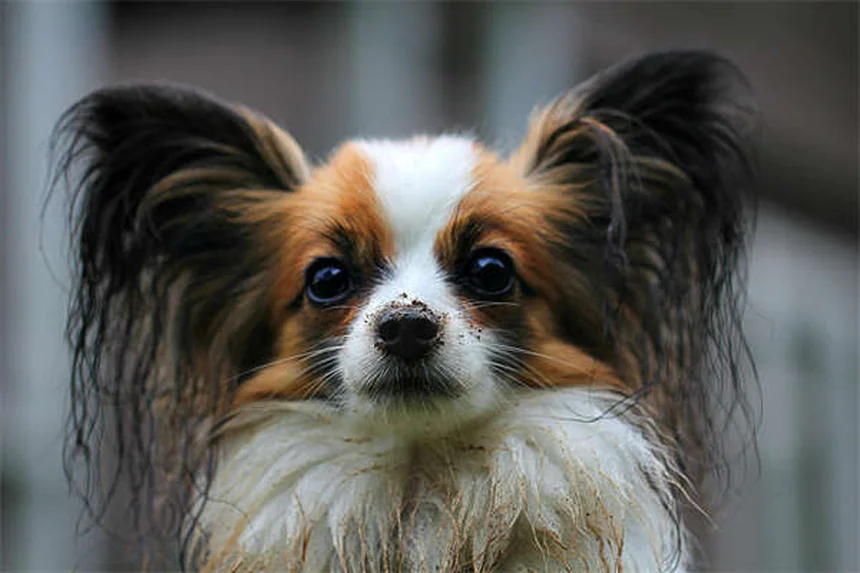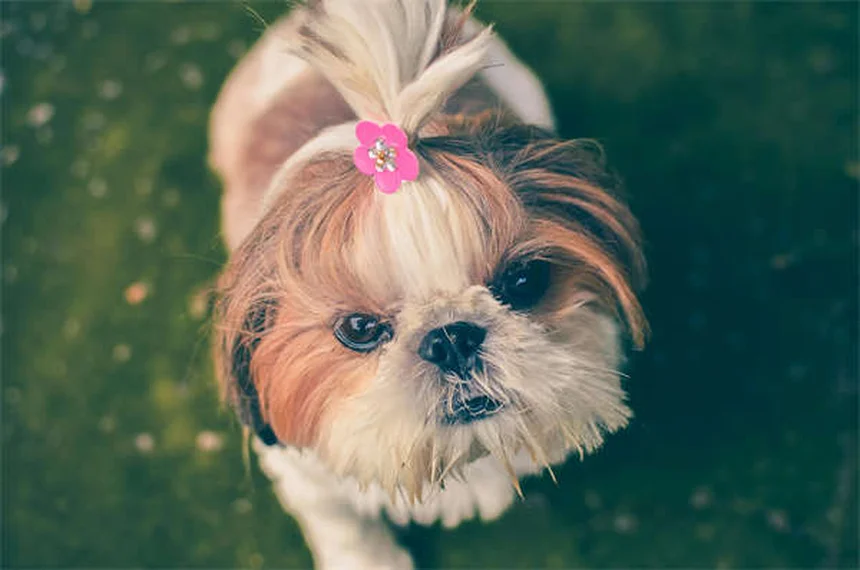Looking for a giant cuddle buddy? The answer is: Yes, these massive feline breeds exist! We're talking about domestic cats that can weigh up to 25 pounds - that's more than double your average tabby. From the majestic Maine Coon to the exotic Savannah, these gentle giants bring extra love (and extra responsibility) into your home.Here's what you need to know: big cats need special accommodations like reinforced cat trees, oversized litter boxes, and carefully measured meals. We'll walk you through everything from their unique personalities to potential health concerns. Whether you're dreaming of a fluffy Ragdoll or an athletic Bengal, we've got the inside scoop on these supersized kitties!
E.g. :Tapeworms in Hamsters: Symptoms, Treatment & Prevention Tips
- 1、Meet Your New Giant House Lion
- 2、The Gentle Giants Club
- 3、The Athletes of the Cat World
- 4、The Couch Potato Division
- 5、The Oddballs
- 6、Making the Big Decision
- 7、Final Thoughts Before You Adopt
- 8、The Unexpected Benefits of Giant Cats
- 9、The Social Life Upgrade
- 10、The Practical Perks
- 11、The Emotional Benefits
- 12、The Unexpected Challenges
- 13、The Bonding Experience
- 14、FAQs
Meet Your New Giant House Lion
Why Go Big When You Can Go HUGE?
Ever looked at your regular-sized cat and thought, "I wish this came in XXL?" Well friend, you're in luck! We're talking about cats so big they could double as foot warmers for NBA players. These gentle giants weigh up to 25 pounds - that's like carrying around two Thanksgiving turkeys year-round!
But here's the thing - big cats mean big responsibilities. You'll need:
- Cat trees that could survive a toddler tornado
- Litter boxes the size of kiddie pools
- Food portions measured with the precision of a chemist
The Care and Feeding of Your Mini Leopard
Imagine trying to keep a Bengal cat entertained. It's like having a tiny leopard who thinks your curtains are the savannah. Pro tip: These athletic furballs need vertical space like teenagers need WiFi. Without proper climbing opportunities, say goodbye to your nice furniture!
Now, let's talk food. Did you know a Maine Coon can eat up to 1 cup of dry food daily? That's enough kibble to feed three regular cats! Here's a quick comparison:
| Breed | Daily Food (cups) | Equivalent In Human Terms |
|---|---|---|
| Average Cat | 1/3 | A light salad |
| Maine Coon | 1 | Thanksgiving dinner |
| Savannah | 1.5 | All-you-can-eat buffet |
The Gentle Giants Club
 Photos provided by pixabay
Photos provided by pixabay
Maine Coon: The Dog of the Cat World
Picture this: a cat so friendly it greets you at the door, plays fetch, and might even try to swim with you. That's your Maine Coon! These massive fluffballs can reach 18 pounds without being overweight - they're just built that way.
But here's something you might not know - their joints need special attention. Hip dysplasia isn't just for dogs! Regular vet checkups and joint supplements can keep your gentle giant moving comfortably for years.
Norwegian Forest Cat: Viking Fluff
Ever seen a cat that looks like it should be prowling through Norse mythology? The Wegie (that's Norwegian Forest Cat for us non-Vikings) comes with built-in snowshoes - those furry paws helped their ancestors walk on snow!
Fun fact: These cats take their sweet time growing up. While most cats are adults by 1 year, Wegies keep growing until they're 5! That's like a human teenager who doesn't stop growing until age 30.
The Athletes of the Cat World
Bengal: Your Personal Leopard
Why settle for watching nature documentaries when you can have the real deal? Bengals bring the jungle to your living room with their wild markings and even wilder energy. Warning: These cats can open cabinets, turn on faucets, and will absolutely outsmart you regularly.
Here's a question: What's the best way to keep a Bengal entertained? The answer might surprise you - water! Many Bengals love playing in sinks, bathtubs, or even trying to join you in the shower. Who knew your cat would be the one demanding bath time?
 Photos provided by pixabay
Photos provided by pixabay
Maine Coon: The Dog of the Cat World
An 8-foot vertical leap might sound impressive for a basketball player, but we're talking about a cat here! Savannahs can jump from the floor to the top of your refrigerator in a single bound. Goodbye, cookies on the counter!
These exotic beauties need special consideration - their wild ancestry means they require more space and stimulation than your average housecat. Think of it like keeping a tiny, very opinionated cheetah.
The Couch Potato Division
Ragdoll: Floppy Love Machines
Ever wanted a cat that acts like a stuffed animal? Ragdolls got their name because they go completely limp when you pick them up. It's like carrying around a 20-pound bag of marshmallows that purrs!
But here's the catch - these laidback kitties would rather nap than exercise. Obesity alert! Without proper portion control and playtime, your Ragdoll might become more "fluff" than "fit." Try using feather toys or laser pointers to get them moving - just don't expect Olympic-level effort.
British Shorthair: The Original Garfield
Remember those cats in old paintings looking smug and slightly round? That's the British Shorthair - the OGs of the cat world. These blue-gray beauties move with the dignified pace of royalty... or maybe just because they're too lazy to hurry.
Here's a tip: These cats respond surprisingly well to catnip. A little sprinkle on their scratching post can turn even the sleepiest British Shorthair into a (briefly) active kitten again!
The Oddballs
 Photos provided by pixabay
Photos provided by pixabay
Maine Coon: The Dog of the Cat World
What do you get when you cross a cat's independence with a dog's loyalty? The American Bobtail! These short-tailed wonders will follow you around like puppies and even play fetch. Their unique tail mutation does mean they need extra care for their spine and hips though.
Did you know Bobtails are excellent travel cats? Many adapt well to leashes and car rides, making them perfect for road trip companions. Just don't expect them to help with directions!
Turkish Van: The Swimming Cat
Breaking news: Not all cats hate water! Turkish Vans actually enjoy swimming - they're like the Michael Phelps of the cat world. Their water-resistant coats make bath time more "fun splash zone" than "feline apocalypse."
Here's something wild: These cats often develop odd habits like turning on faucets or playing in their water bowls. If you get a Turkish Van, you might want to invest in some waterproof flooring!
Making the Big Decision
Space Requirements: More Than Just a Cat Bed
Think your apartment can handle a Savannah? Let's be real - these cats need space like fish need water. We're talking cat trees taller than you, shelves specifically for climbing, and enough room for those impressive 8-foot vertical leaps.
Here's a quick reality check: If your living space is smaller than a studio apartment, maybe stick with a smaller breed. Your furniture (and sanity) will thank you!
The Cost of Going Big
Let's talk numbers - big cats mean big expenses. From jumbo-sized litter boxes to industrial-strength scratching posts, everything costs more. And don't even get me started on vet bills! That hip dysplasia screening for your Maine Coon? Yeah, that's not cheap.
But here's the upside: You're getting double (or triple!) the love in return. Just make sure your wallet is as ready as your heart is!
Final Thoughts Before You Adopt
Are You Really Ready for This?
Before you run out to get your giant fluffball, ask yourself: Can you handle the hair? The food bills? The sheer size of everything? If the answer is yes, then congratulations - you're about to join the elite club of big cat owners!
Remember, these aren't just cats - they're lifestyle commitments. But for those of us who love them, there's nothing better than coming home to what feels like a small mountain of purring affection.
Where to Find Your Giant Kitty
Reputable breeders are your best bet for most of these breeds, though you might get lucky at shelters too (especially with Maine Coons). Just do your research - anyone selling "discount Savannahs" is probably selling you a tall tale along with that cat!
Now go forth and find your perfect giant feline companion. Just don't blame me when you need to buy a king-size bed to share with your new 25-pound fur baby!
The Unexpected Benefits of Giant Cats
Natural Home Security System
You know what's better than an alarm system? A 20-pound cat that sounds like a mountain lion when it meows at 3am. Burglars take one look at your Maine Coon's paw prints in the litter box and suddenly remember they left the oven on at home. These massive felines provide security through sheer intimidation factor - even if they'd probably just demand belly rubs from intruders.
Here's a funny story from a Maine Coon owner: Their cat once scared off a door-to-door salesman just by stretching to full length in the window. The guy literally jumped back and said "Nope!" before speedwalking away. Now that's what I call effective deterrence!
Built-in Winter Heating
Ever wake up with cold feet? Not with a Norwegian Forest Cat around! These walking fur blankets generate enough body heat to warm your entire lap. Pro tip: During winter months, position your Wegie between you and your partner in bed - instant space heater that purrs!
Let's compare heat retention abilities:
| Cat Type | Heat Output | Best Use Case |
|---|---|---|
| Regular Cat | Single sock warmer | Chilly toes |
| Maine Coon | Full leg warmer | Cold winter nights |
| Norwegian Forest Cat | Whole body warmer | Power outages |
The Social Life Upgrade
Instant Conversation Starter
Think dating is hard? Try walking a Savannah cat on a leash through the park. You'll have more phone numbers than you know what to do with (though 90% will just want to pet your cat). These exotic-looking giants turn heads faster than a celebrity sighting.
Here's a question: Why do people assume big cats are less friendly? The truth is, many giant breeds like Ragdolls and Maine Coons are actually more sociable than their smaller counterparts. They've got more body to love with, after all!
Built-in Social Media Content
Forget trying to be Instagram famous - just post daily videos of your Bengal cat attempting to open the refrigerator. Guaranteed viral content! Big cats do everything on a grander scale, whether it's epic fails or adorable moments.
Want engagement? Film your Turkish Van playing in water. That's at least 10K likes right there. Just be prepared for the "Is that really a cat?" comments - happens every time!
The Practical Perks
Never Lose Your Keys Again
Here's a life hack: Train your American Bobtail to fetch small objects. Those dog-like tendencies mean they'll happily bring you your misplaced items - though they might demand treats as payment. It's like having a very furry butler with a short attention span.
One owner taught their Bobtail to retrieve specific items by name. Now when they say "phone," the cat brings it - unless it's nap time, in which case all bets are off.
Natural Pest Control on Steroids
Regular cats catch mice. Savannah cats? They could probably take down small deer if they wanted to. Warning: You might find "gifts" that look like they belong in a nature documentary. On the bright side, no rodent would dare enter your home!
Ever wonder why farms love Maine Coons? These gentle giants can clear a barn of pests faster than an exterminator - and they work for kibble instead of hundreds of dollars per visit.
The Emotional Benefits
XL-Sized Comfort
Bad day at work? Nothing beats coming home to a Ragdoll that flops across your entire torso like a living weighted blanket. Their purr vibrations could power small appliances - or at least melt away your stress.
Studies show petting large animals reduces anxiety more effectively than smaller ones. Maybe it's the sheer amount of soft fur to bury your hands in. Whatever the reason, it's cheaper than therapy!
Constant Entertainment
Why pay for streaming services when you have a Bengal cat? These athletic furballs provide non-stop entertainment with their acrobatics and problem-solving skills. Last week mine figured out how to turn on the TV - now if only I could teach it to change to my favorite shows!
Here's a comparison of entertainment value:
| Activity | Regular Cat | Giant Cat |
|---|---|---|
| Jumping | Onto counter | Onto refrigerator |
| Playtime | Chases string | Opens cabinets to find string |
| Mischief | Knocks over cup | Learns to turn on faucet |
The Unexpected Challenges
When Your Cat Outgrows Everything
That adorable kitten bed you bought? Your Maine Coon will be using it as a pillow by month six. You'll find yourself shopping in the dog section for beds, carriers, and toys - and explaining to confused pet store employees that no, you don't actually own a small bear.
One owner had to special-order a cat tree rated for 50 pounds after their Norwegian Forest Cat collapsed two standard ones. Turns out "forest" in their name isn't just for show!
The Food Bill Reality Check
Ever seen a Savannah cat eat? It's like watching a vacuum cleaner with legs. You'll go through cat food faster than a college student goes through ramen. And premium food for these breeds isn't cheap - we're talking $100+ per month for some of the larger exotic mixes.
Here's a question: How do you budget for a cat that eats like a small dog? The answer involves bulk buying, automatic feeders, and possibly a second job. Just kidding... mostly.
The Bonding Experience
Training Your Giant Feline
Think cats can't be trained? Try telling that to a British Shorthair who's learned to high-five for treats. These big breeds often have dog-like intelligence and willingness to learn - when they feel like it, of course. The key is finding what motivates them (usually food or play).
One clever owner taught their Maine Coon to ring a bell when hungry. Now they get musical reminders every 2 hours - whether they've actually run out of food or not!
The Ultimate Lap Cat Experience
There's nothing quite like the feeling of a 20-pound purring machine settling into your lap. It's like being chosen by a very soft, very heavy monarch - you won't be able to move for hours, but you won't want to either.
Just be prepared for the "dead leg" phenomenon common among giant cat owners. That tingling sensation when circulation returns? Small price to pay for feline affection!
E.g. :List of largest cats - Wikipedia
FAQs
Q: How big do Maine Coon cats get?
A: Maine Coons are one of the largest domestic cat breeds, typically weighing between 8-18 pounds when fully grown. Some males can even reach up to 20 pounds without being overweight! These gentle giants take about 3-5 years to reach their full size. Remember, their large frame means they need extra-large accessories - think jumbo litter boxes and heavy-duty scratching posts. We recommend talking to your vet about joint supplements, as their size can make them prone to hip dysplasia.
Q: Are big cat breeds good with kids?
A: Absolutely! Many large cat breeds like Ragdolls and Maine Coons are known for their exceptionally gentle and patient temperaments. Their laid-back nature makes them perfect for families. However, always supervise interactions between small children and any pet. While these big kitties are typically tolerant, even the most easygoing cat needs their space sometimes. Teaching kids proper handling techniques is key to a happy household.
Q: What's the most expensive big cat breed to own?
A: Savannah cats typically top the price charts, often costing between $1,500-$20,000 depending on generation. But the expenses don't stop there! These exotic-looking felines need specialized care including: high-quality food, larger enclosures, and more frequent vet checkups. We suggest budgeting for unexpected costs too - like replacing curtains your athletic Savannah might use as climbing walls!
Q: Do large cat breeds have more health problems?
A: While not all big cats have health issues, their size can predispose them to certain conditions. Common concerns include hip dysplasia, arthritis, and heart conditions. The good news? Many of these can be managed with proper care. We recommend regular vet checkups, maintaining a healthy weight, and providing joint supplements when needed. Remember, a big cat at a healthy weight will generally have fewer problems than an overweight cat of any size!
Q: How much more food do big cats need?
A: Giant breeds can eat 2-3 times more than average cats! For example, a Savannah might need 1.5 cups of dry food daily compared to a regular cat's 1/3 cup. But here's the catch: you can't just free-feed these big guys. We suggest measured meals and puzzle feeders to prevent obesity. Always consult your vet for portion recommendations specific to your cat's age, activity level, and health status.

